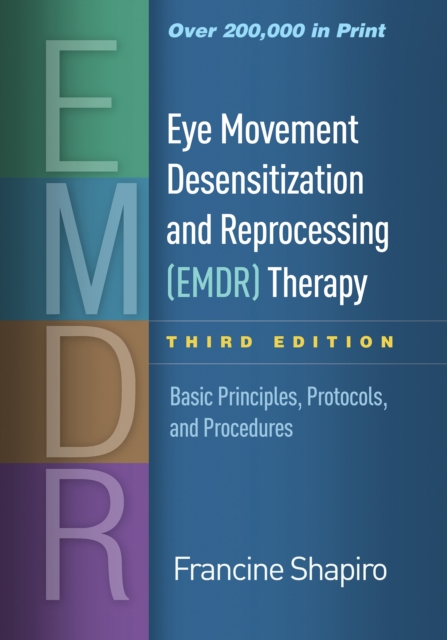
Eye Movement Desensitization and Reprocessing (EMDR) Therapy : Basic Principles, Protocols, and Procedures PDF
by Francine Shapiro
Please note: eBooks can only be purchased with a UK issued credit card and all our eBooks (ePub and PDF) are DRM protected.
Description
The authoritative presentation of Eye Movement Desensitization and Reprocessing (EMDR) therapy, this groundbreaking book--now revised and expanded--has been translated into 10 languages. Originally developed for treatment of posttraumatic stress disorder (PTSD), this evidence-based approach is now also used to treat adults and children with complex trauma, anxiety disorders, depression, addictive behavior problems, and other clinical problems. EMDR originator Francine Shapiro reviews the therapys theoretical and empirical underpinnings, details the eight phases of treatment, and provides training materials and resources. Vivid vignettes, transcripts, and reproducible forms are included. Purchasers get access to a webpage where they can download and print the reproducible materials in a convenient 8 1/2 x 11 size.
New to This Edition
*Over 15 years of important advances in therapy and research, including findings from clinical and neurophysiological studies.
*New and revised protocols and procedures.
*Discusses additional applications, including the treatment of complex trauma, addictions, pain, depression, and moral injury, as well as post-disaster response.
*Appendices with session transcripts, clinical aids, and tools for assessing treatment fidelity and outcomes.
EMDR therapy is recognized as a best practice for the treatment of PTSD by the U.S. Departments of Veterans Affairs and Defense, the International Society for Traumatic Stress Studies, the World Health Organization, the U.K. National Institute for Health and Care Excellence (NICE), the Australian National Health and Medical Research Council, the Association of the Scientific Medical Societies in Germany, and other health care associations/institutes around the world.
New to This Edition
*Over 15 years of important advances in therapy and research, including findings from clinical and neurophysiological studies.
*New and revised protocols and procedures.
*Discusses additional applications, including the treatment of complex trauma, addictions, pain, depression, and moral injury, as well as post-disaster response.
*Appendices with session transcripts, clinical aids, and tools for assessing treatment fidelity and outcomes.
EMDR therapy is recognized as a best practice for the treatment of PTSD by the U.S. Departments of Veterans Affairs and Defense, the International Society for Traumatic Stress Studies, the World Health Organization, the U.K. National Institute for Health and Care Excellence (NICE), the Australian National Health and Medical Research Council, the Association of the Scientific Medical Societies in Germany, and other health care associations/institutes around the world.
Information
-
Download - Immediately Available
- Format:PDF
- Pages:568 pages
- Publisher:Guilford Publications
- Publication Date:20/11/2017
- Category:
- ISBN:9781462532780
Other Formats
- Hardback from £65.99
- EPUB from £51.83
Information
-
Download - Immediately Available
- Format:PDF
- Pages:568 pages
- Publisher:Guilford Publications
- Publication Date:20/11/2017
- Category:
- ISBN:9781462532780






